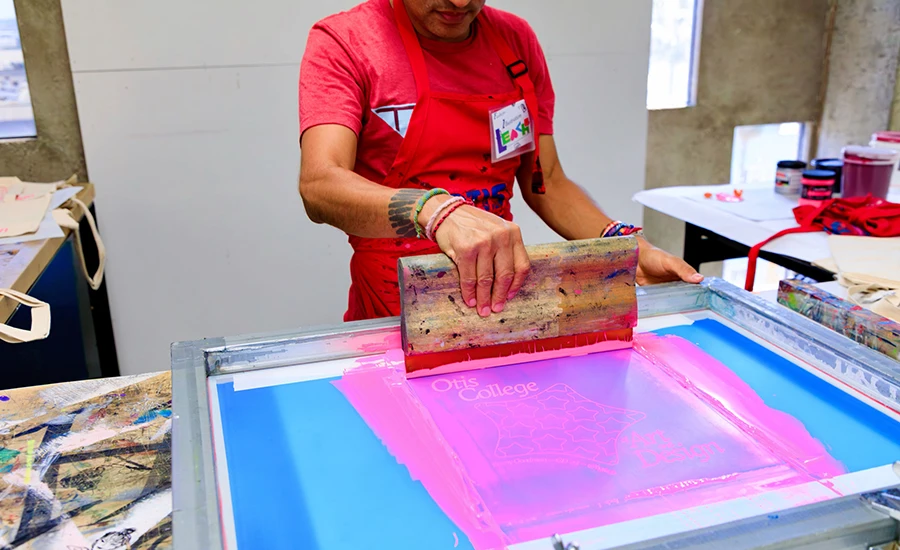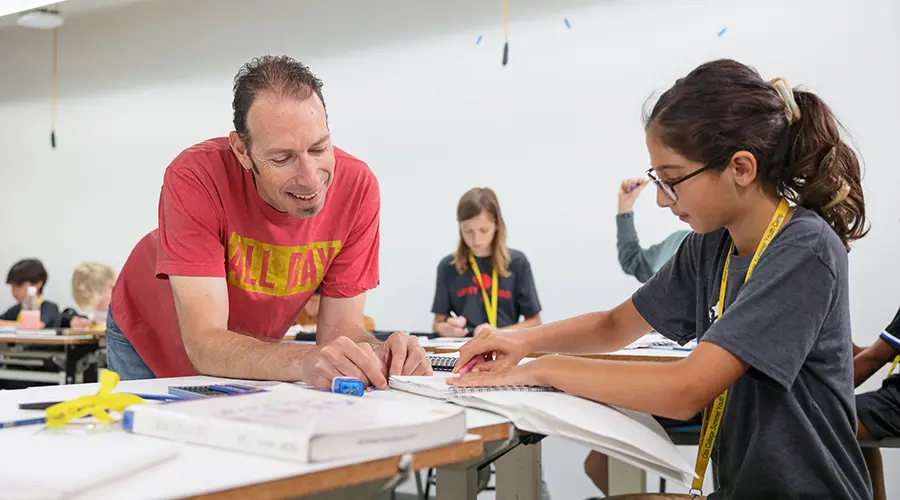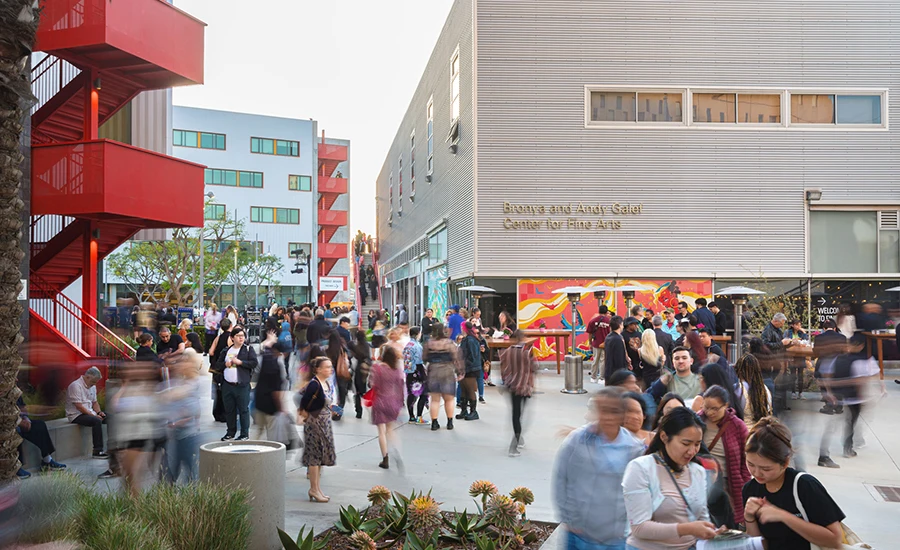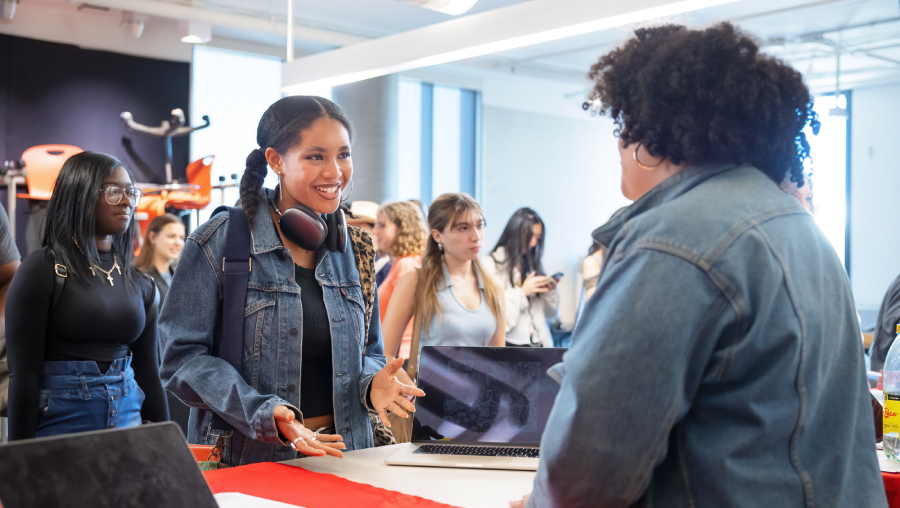Otis College Alum Steve Roden Is Honored with Posthumous Exhibition of Sculpture Through The Getty’s PST ART Initiative
Roden’s Ear(th) Has Been Painstakingly Recreated as Part of a Group Exhibition on View Through January 19, 2025
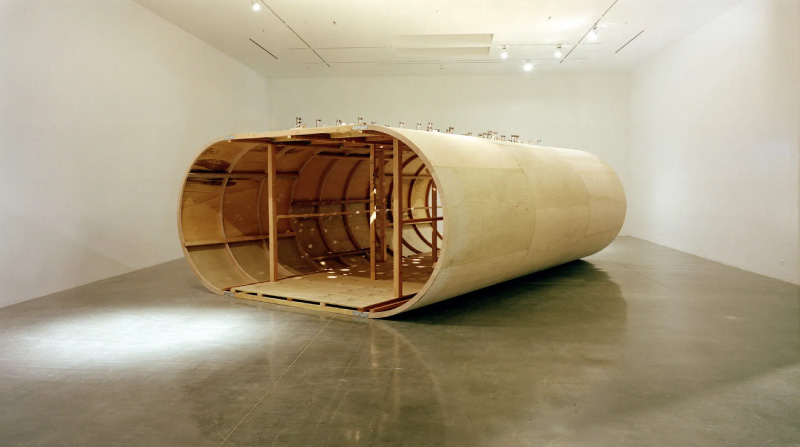
The sharp sounds of a xylophone reached my ears before I could determine their source. I stepped towards a large, wooden structure, pausing before entering to pull shoe protectors over my boots. As I entered Steve Roden’s ear(th), an eight-foot-tall hollow sculpture, my head swiveled at the sound of glockenspiels being activated above me. I felt like a small coin in a can, or maybe a pinball in a machine. The experience felt somehow playful and reflective as I focused on the texture of sounds, trying to find a pattern.
The composition of ear(th) correlates to seismic data from a 1999 earthquake in the Mojave Desert. The score is made by robotic arms that hit the xylophone bars at specific moments that correspond to these vibrations; there’s also a recording of Roden playing the glockenspiel himself, layered over the live notes.
I knew this background information going in, but also found the piece at turns soothing and spirited. Roden (’86 BFA Fine Arts) created the kind of work that offers space to audiences, keeping the door open for their own interpretations and connections.
ear(th) was last shown in 2004 at ArtCenter College of Design in Pasadena, California. For the first time in 20 years, the piece has been faithfully recreated as part of the exhibition Energy Fields: Vibrations of the Pacific, co-presented by Fulcrum Arts and Chapman University. The show is on view now through January 19, 2025 as part of The Getty’s initiative PST ART: Art & Science Collide.
A Visual and Aural Artist
Born in Los Angeles in 1964, Roden started playing music in high school. He attended Otis College as an undergrad before receiving his MFA at ArtCenter in 1989. As his career expanded, he became known for his work as both an artist and a musician. His work incorporated sound, painting, drawing, video, and installation—mediums that overlapped and intertwined in surprising ways.
When Roden passed away in September 2023, he left a significant impact on numerous artists including Roy Dowell, one of his Otis professors. Dowell remembers that even as a student, Roden seemed sure of his art and process; he “invented his own vocabulary” and stuck to his artistic vision.
“The work was never tentative,” says Dowell, an esteemed artist and educator. “It was sometimes very dense and packed with information, and sometimes very simple—but always very individualized. That’s something that I was always really excited by in his work.”
Dowell says he and Roden were both influenced by painters Alfred Jensen and Paul Klee and performance artist Allan Kaprow. They kept in touch over the years. Before Roden passed away, they planned to trade art works; Roden had chosen a piece from his former professor’s studio but didn’t get to pick it up. Dowell says he plans on keeping the piece as “a memory of Steve, and just my tremendous appreciation of his work.”
When Susanne Vielmetter opened her eponymous gallery in Los Angeles, Roden was one of the first artists she showed with the 2003 exhibition the silent world. Beyond his art practice, Vielmetter describes Roden as thoughtful and extremely generous. Even while his work developed over the years, he stayed “remarkably true to himself” and modeled to younger artists how to maintain the integrity of the work and “develop a very idiosyncratic and very honest vision.”
Vielmetter says Roden also prided himself on making his own stretchers for canvases. While his process was conceptual, incorporating “a rather rigorous set of systems and rules,” he valued humble objects, like sticks and acorns.
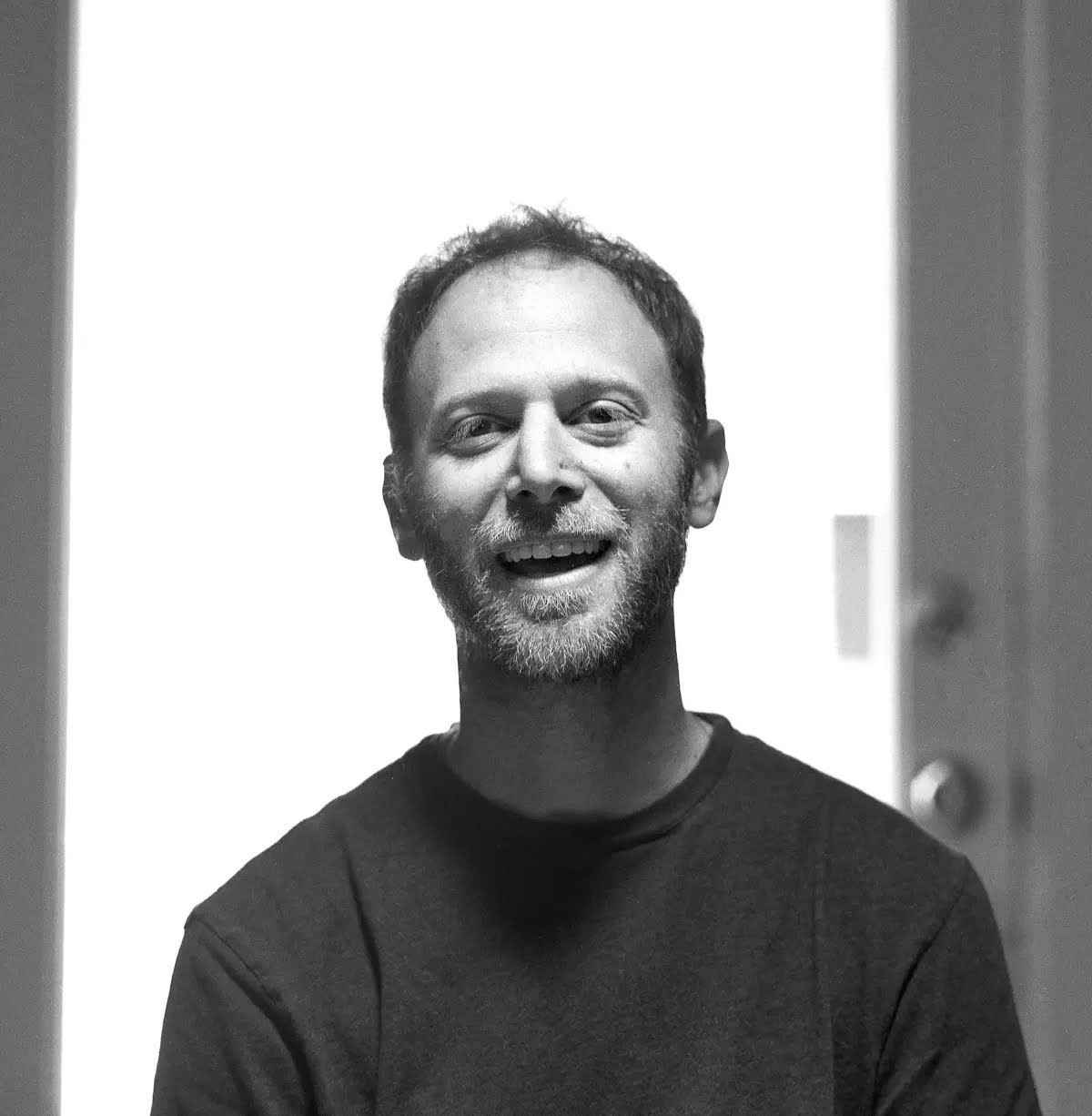
In 2001, Roden was included in the Hammer Museum’s exhibition of 25 important local artists, Snapshot: New Art from Los Angeles, for which the artist displayed The Surface of the Moon. The sculptural installation consists of 490 hand-carved objects—the number corresponding to the amount of land formations cataloged in the book Celestial Objects for Common Telescopes. Roden created a system where the vowels used in each formation’s name indicated the height of each object and the materials used to create it.
Earlier this year, the piece was shown again as part of an exhibition organized with curator Rebecca McGrew at Vielmetter; floating over the silent world, a tribute to Roden’s work, featured some of his lesser-known pieces created from 1990 to 2019.
In describing Roden’s sculpture, The Surface of the Moon, Vielmetter calls his process “the Steve Roden system of translation.” But while words like “system” and “rules” might hint at a strict approach, Roden’s career centered on false starts and detours, too. In an interview with Artbound, Roden put it this way: “The making of artworks is a learning process. The only way you can do that, I think, is by experimentation. And failure is this huge aspect of experimentation.”
Recreating Roden
Robert Takahashi Novak and Lawrence English, co-curators of Energy Fields, dedicated the exhibition to Roden’s memory. Novak remembers first hearing about Roden’s work when he moved to Los Angeles in the 1990s, and soon after meeting the artist through mutual friends. He describes Roden’s work as “exploratory and improvisational, whether it manifested in a sound performance or composition or a visual artwork.”
The two worked on projects such as the 2012 exhibition Shells, Bells, Steps and Silences, presented at Los Angeles Contemporary Exhibition (LACE). The exhibition resulted from Roden’s time spent researching the noted philosopher Walter Benjamin’s archives, as well as work inspired by Roden’s acquisition of objects that once belonged to dancer Martha Graham.
Before Roden passed, Novak worked with him to plan the reproduction of ear(th); he says Roden knew they had received funding for the project and was excited at the prospect of people experiencing it once again. The installation of the work became “a gesture and a way to help honor and solidify Steve’s legacy as an important experimental artist,” says Novak. Visitors who know him primarily as a painter can see his sculptural work, and new audiences can gain an appreciation for the way he combined sound and visual art. “Even though Roden came up with his own systems,” says Novak, “if the work wasn’t taking shape in a way that he found interesting or compelling, he would then break his own rules.”
Marcus Herse, director of the Guggenheim Gallery at Chapman University, sees ear(th) as a way of shifting our perspective when it comes to “invisible forces” like the seismic data Roden focused on. The piece captures something that “otherwise, we can’t sense with our natural equipment.” Which is to say that even without the full context, just standing in the large wooden structure and experiencing the piece’s composition is enough. The same can be said for Roden’s work over the years.
“Ultimately, he wanted people to just appreciate the formal qualities of the work,” says Novak. “There’s more reward the more you investigate. But the work itself was always visually and sonically very satisfying.”
More information about Energy Fields: Vibrations of the Pacific, on view in both the Guggenheim Gallery and Packing Plant at Chapman University in Orange, California, through January 19, 2025.
More information about Steve Roden.
Related News
